Eel Coast Cultural Heritage
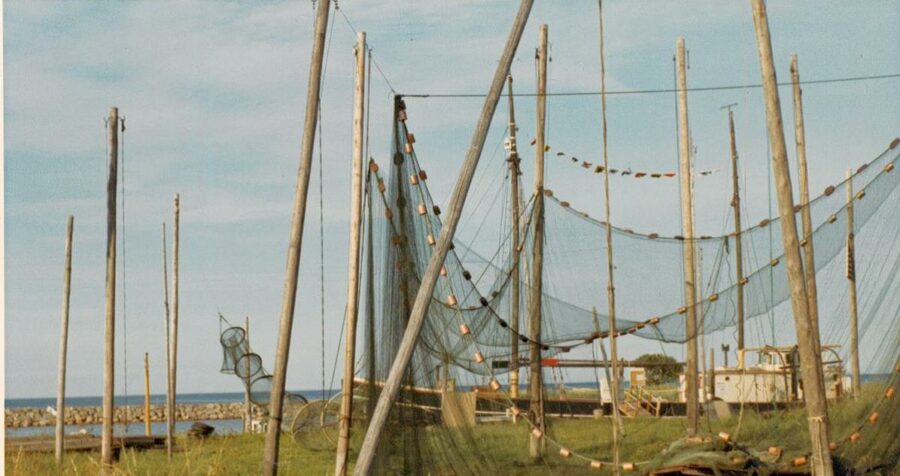
Background
The Eel Coast Cultural Heritage NGO started working in 2012 as an organisation and was formally established in 2013-03-29.
The NGO was established in order to preserve, protect and spread information about the eel and the intangible cultural heritage, traditions, folklore, music, craftsmanship and knowledge surrounding eel fishing along the traditional eel fishing coast between Åhus and Stenshuvud in eastern Scania, Sweden. Traditional, small scale eel fishing involves the inheritance of craftsmanship from father to son.
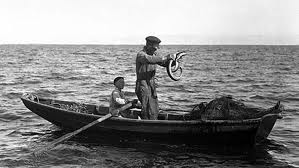
Traditional fishing. Photo: Ålakustens kulturarvsförening.
These cultural traditions are documented dating back to the 13th Century, when Scania was part of the Danish realm. However, eel fishing along this coastal line can be dated through archaeological findings back to the Bronze Age. During the Danish era in Scania, all eel fishing rights were established as legal estates, and the Swedish king inherited these rights when Scania became part of Sweden by the mid 1600’s. The eel fishing rights, some owned by the castleowners, are still registered and taxed as legal estates by the Swedish authorities.

Tvillingaboden, a traditional building from 1873. Photo: Ålakustens kulturarvsförening.
Originally, the eel festivals took place at the fishermen’s cottages. After the eel fishing season had ended in late November, the fishermen served eel to the fishing rights holders, as one form of paying the rents to the goods. From these old traditions, the modern eel festivals from the 1900’s derive. Today, they have become a popular, annual meeting for visitors coming from everywhere around every autumn, where the old songs and folklore of eel fishing are performed together. Traditional eel fishing has become an important cultural meeting place as well as an income bringing event from tourism. An increasing amount of both national and international tourists visit the eel festivals annually.
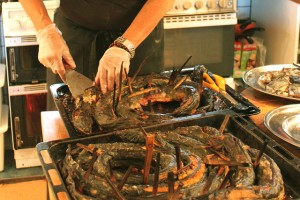
Preparing the eels. Photo: Ålakustens kulturarvsförening.
The eel fishing in this region was proclaimed a national intangible cultural heritage in Sweden in 2015, and the Eel Coast Cultural Heritage NGO was accredited by UNESCO as an NGO providing services in eel questions to UNESCO in September 2020. The NGO works with the documentation and preservation of the knowledge surrounding the ICH in craftsmanship, fishing, boats, nets, tools, cottages and cookery; the oral traditions and folklore; performing arts; social activities, festivals and events.
Objectives
The preservation of the eel fishing traditions is threatened, even though it is a small scale, coastal near, ecological and sustainable fishing, in complete accordance with the 17 global sustainability goals of the UN and UNDP, where it is established that the rights of local, small scale and coastal near fishermen must be guaranteed, thus enabling culture to become part of the regional economy and development e.g. through tourism. The threats come from national legislations in Sweden, not allowing fishermen to inherit the licence needed to fish, from water turbines that kill spawning fish species (not just the eel), from environmental emissions, from non-regulated predators like seals and cormorants and from non-regulated fishing of eel larvae along the Atlantic coast and in the Mediterranean Sea.
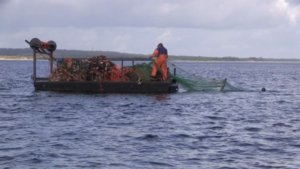
Setting the nets.
Photo: Ålakustens kulturarvsförening.
How it was done
We have established a more accessible eel fishing intangible cultural heritage to visitors in the region. Every year we and the Eel Academy arrange an Eel Festival, where the public may taste different eel dishes and learn more about the intangible heritage, folklore, music, craftsmanship and traditions. We have also made an informative school material, a guide book to the fishermen’s cottages, an eel cookery book and a book about the stories from eel fishermen along the coast.
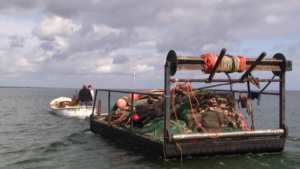
Eelfishing. Photo: Ålakustens kulturarvsförening.
For 21 years an annual guided tour along the eel coast and fishermen’s cottages has been arranged by the Eel Academy. A few years ago we started a wide cooperation regarding this tour between the Academy, our NGO and the Eel Fishing Fund. During the tour we tell about the traditions, folklore and craftsmanship.
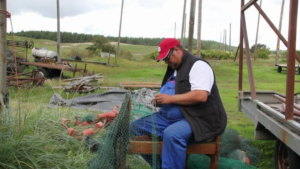
Mending the nets. Photo: Ålakustens kulturarvsförening.
Visitors may book the guided tour separately, and can also get a personal meeting with an eel fisherman to see the cottage and learn more about the craftsmanship and traditions.
To preserve the eel itself, visitors are asked to pay a contribution fee, and most eel fishermen pay a fee from their own annual income to the Eel Fund. Together we preserve the eel by annually releasing eel fry into the Baltic Sea – to this day 1 million fry.
We have made a short film, called “Eel Coast – a future intangible heritage”, describing our cultural heritage. The film was made by a professional film maker, and is available in both Swedish and English at our website and on youtube. It was sponsored by a local bank.
In November 2015 we, in cooperation with the municipality of Kristianstad, arranged a conference about the Eel Coast. It was held in the town hall and with the participation of leading local politicians and experts in the field.
Our website www.alarv.se is well provided with information about eel, eel fishing, cultural heritage and craftsmanship. An increasing amount of visitors come to our website as well.
The oldest known eel fisherman’s cottage has been preserved as a museum, showing visitors how eel fishermen lived and worked in the old days. The cottage is kept by another local NGO, with which we have a well-developed cooperation.
In 2016 we established a large cooperation with The Museum of Kivik, the oldest museum in the eel coast region. Together with the historians at the museum we have created a permanent eel fishing exhibition at the museum, and the staff is involved in the guided tours. The Museum Director is a member of our Board. We also cooperate in arranging local water conferences, editing of books, research and much more.
We are continuously documenting the traditional eel fishing, folklore, music and oral traditions. We are now working with a book covering all eel fishing boats and cottages along the coast, including the abandoned and forgotten, using old maps and stories. The information is kept available at our website and in the exhibition at The Museum of Kivik. We have also made a tour, by using QR-codes, making the information available to visitors all year.
In September 2017 we provided the Swedish government with information and knowledge about the eel and eel fishing situation in a consultative meeting between representatives from our Board and the Ministry of Enterprise and Innovation.
As aforesaid, our NGO has a broad and wide network and cooperation with individuals, other NGOs and authorities working to preserve the cultural heritage. Two of the most renowned eel fishing experts in the entire region are directly connected to the NGO. We know all eel fishermen personally along the coast line and we all work together in planning and marketing events, following up information about the eel and the Baltic Sea, writing debate articles and documenting whatever happens in the area concerning the eel, the eel fishing and the marine biology. We also work together in preserving both the eel itself, by releasing young eels, and preserving, documenting and transmitting the cultural heritage surrounding eel fishing.
We have an established and very good relationship with The Eel Academy; The Eel Fishing Fund; The Swedish National Heritage Board and The Swedish Institute for Language and
Folklore.
In April 2021 we handed in an application for the eel coast to become a member of the UNESCO global list of ICH:s, supported by The Biosphere Area of Kristianstad; local NGOs preserving the cultural heritage, both tangible and intangible; the fishing unit and the cultural unit of the County Administrative Board; the culture unit of Region Skåne; and the municipalities of Kristianstad and Simrishamn.
For further information, please contact us at: info@alarv.se
Link to video (in English) about the Eel Coast: Video Ålakust / Eal Coast – Ålarv (alarv.se)
